Welcome to The Spa Dr. Podcast. Today we’re talking about how environmental toxins impact our health with Dr. Walter Crinnion. Dr. Crinnion received his Naturopathic Doctorate from Bastyr University in 1982. In addition to private practice specializing in environmental medicine, he has taught environmental medicine at all of the naturopathic medical schools – Bastyr University, SCNM, NCNM and University of Bridgeport.
Dr. Crinnion has been a reviewer for multiple scientific and medical journals including The New England Journal of Medicine. He is the author of the book Clean, Green & Lean: Get rid of the toxins that make you fat. He has been on The View with Barbara Walters three times to discuss these issues.
On today’s show we discuss some of the most common toxins in our environment, such as endocrine disrupting chemicals, where you’ll find them, how to avoid them, and what foods and nutrients are the most important to help eliminate these from our body for disease prevention and optimal health.
Topics discussed today include:
- Environmental medicine is looking at the effect of our daily level of environmental chemicals from pollution and how those adversely affect our health
- Standard toxicologists are looking for exposure to a single compound that is causing damage, environmental medicine is different than this
- Most major chronic diseases are caused by environmental pollutants that don’t fit the toxicologists viewpoint
- There are 104 toxicants found in average US homes
- A big issue is endocrine disrupting chemicals, these are environmental compounds that impact how our hormones function which affects thyroid and adrenal functions among other things
- Vehicular exhaust is a really damaging endocrine disrupter that we breath
- Plasticizers and phthalates are a big problem, fragrances have phthalates in them
- Phthalates have been associated with infertility and obesity
- Persistent organic pollutants are banned worldwide, but they are high in farmed salmon and sardines
- If we lower the load of pollutants the body heals itself
- Step one reduce overall exposure to personal care products, home care products, and other environmental pollutants
- Farmed salmon are high in PCBs because of the fish pellets they are fed
- To help support our bodies we can clean our indoor air quality through cleaning ducts and adding air filters
- Dietarily we can avoid the dirty dozen fruits and vegetables and eat a diet that is clean and healthy and mostly alkaline
- Green tea, green vegetables, and brown rice can help increase excretion of toxicants in the body
- Moderate grains seem to help improve health
- The higher the fat diet the more endotoxins enter the bloodstream
- The right microbiome can clean out toxins
Key Takeaways:
We are exposed to so many environmental toxins, cleaning up our exposure to toxins and finding a healthy balance with a diet that improves the gut biome can go a long way for making us healthier.
Mentioned on today’s show:
Additional links to check out:
- TheSkinQuiz.com – Get your customized skin profile. It’s free, and based upon your answers, it will give you great tips for glowing skin and vibrant health.
Don’t miss out on all of the latest tips to get glowing healthy skin from the inside and out. Be sure to follow me on Facebook, Pinterest, and Twitter. Join the conversation!
If you enjoyed this show please leave a review on iTunes.
***Intro***
Dr. Cates: Hi there, I’m Dr. Trevor Cates, welcome to The Spa Doctor podcast. Today, we’re talking about how environmental toxins impact our health. This may be something that you think you don’t have a problem with, but in fact we have toxins in our air, water, food, and personal care products that we’re exposed to on a day to day basis regardless of where you live.
This is a really important topic because we know these toxins are related to our health and can lead to a number of different chronic diseases. To discuss this today is my guest Dr. Walter Crinnion.
Dr. Crinnion received his naturopathic doctorate degree from Bastyr University in 1982. In addition to private practice specializing in environmental medicine, he has taught environmental medicine at all of the US accredited naturopathic medical schools. Dr. Crinnion has been a reviewer for multiple scientific and medical journals including the New England Journal of Medicine, and he is author of the book Clean, Green, and Lean, Get Rid of The Toxins That Make You Fat.
On today’s show, we discuss some of the most common toxins in our environment such as endocrine disrupting chemicals. Where you find them, how to avoid them, and what foods and nutrients are the most important to help eliminate these from our body for disease prevention and optimal health. Please enjoy this interview with Dr. Crinnion.
***Interview***
Dr. Crinnion, it’s so great to have you on my show.
Dr. Crinnion: Dr. Cates, I’m delighted.
Dr. Cates: Today we’re talking about environmental medicine. Over the years, I’ve learned so much from you. When I graduated from naturopathic school in 2000, shortly after that I went into an intensive training with you and I learned so much about environmental medicine and I continued to come to your conferences and listen to you speak. I so appreciate having you here. I want to first start with talking about what is environmental medicine?
Dr. Crinnion: Environmental medicine is really a relatively new field. It’s looking at the effect of our daily level of environmental chemicals from air pollution, food pollution, water pollution, personal care product pollution. How those adversely affect our health.
It’s different than standard toxicology. The standard toxicologists are looking at the exposure to a single compound that causes severe damage and possibly death to somebody. That and occupational medicine are looking at the workplace. What’s the level of bad things in a workplace that causes somebody so much health problems that they can’t work?
And that’s a different realm than environmental medicine. There’s so much information now out there showing that there are levels of the chemical toxic that every single one of us has rolling around in our bloodstream that actually can be a factor in chronic disease. It’s most of the major chronic diseases. It’s not like some rare disease that 35 people have, I’m talking about all the major things going on for us. Cardiovascular disease which is the number one killer in the country. Obesity, diabetes, infertility, autoimmunity, chemical sensitivity, fibromyalgia, chronic fatigue, autism, ADHD, allergies, all these things that people are struggling with.
They might not be flat out on their back in the hospital, what I call horizontal medicine. They’re vertical, it’s a vertical medicine problem, but they’re not doing well. And so, that’s what environmental medicine is. It’s looking at these levels of compounds that don’t fit a toxicologist’s end point for you’re acutely poisoned. It’s a very different realm.
Dr. Cates: Yeah, and like you said it impacts so many of us, actually it impacts all of us.
Dr. Crinnion: Yes, it does.
Dr. Cates: Because I talked about how there’s so many chemicals in our air, water, food and personal care products that works in our day-to-day basis regardless of wherever you live, certainly some areas you can get more exposure than others but we really are all impacted by it.
Dr. Crinnion: Absolutely, we all have these bad habits. We breathe, we eat, we drink. I get doctors calling me up and say well I got this patient, I don’t know that there’s any clear exposure. And my response is, “Is your patient dead?” Because we breathe, we have these things.
The centers for disease control has been doing an ongoing trial now for probably the last 15, 20 years. It’s done nationally so they get normal residents of the United States throughout the country with the [00:04:17 anni henstra] which is the national health and nutritional survey that’s been going on for decades.
They have been starting to ask the question “How many chemicals toxicants are in the average US resident?” They have now tested for approximately 246. 104 are found ubiquitously throughout residents of North America. These are not, they don’t work at Boeing making the space shuttle. These are not mechanics or the crop dusters, this is the average red stakes of America. They get up and get to work, and they come back. They’re not crop dusters, they are agricultural workers. Certainly, some of those will be in the mix but 104 toxicants in all of us? They only tested two 246.
Dr. Cates: And one of the big components of these are endocrine disrupting chemicals. Can you explain a little about endocrine chemicals? What they are and where we find them.
Dr. Crinnion: Well, endocrine receptors are as they sound, environmental compounds, mostly chemicals, that impact the way our hormones are made, our hormones are transported, the hormone receptors, the effect of the hormones. It messes up all the hormonal signals in our body which can be your thyroid for metabolism, weight, and energy. It can be your adrenals for how well you handle stress. It can be your sex hormones. A woman’s menopause, ability to conceive, libido, a man’s testosterone, libido, ability to father a child, energy, and mental well-being.
One of the interest thing is the endocrine society which is a group of endocrinologists, they’ve now been involved in two studies both in Europe. In the European studies they said let’s look at five endocrine disrupting chemicals and look at the annual cost in health care to the populous of Europe for these five? They did not look at hormonal end product, end results, they looked at neurologic end results.
When your hormones are off, your brain is off. These compounds, yes they’re endocrine disruptors, but they also mess up your mitochondria, your ability to produce energy in every cell in your body. They mess up your neurological system, immune system, and your hormones as well.
For example when I started in practice in the early 1980’s, I had a lot of young families in my practice. There were these young women in their 20s, couldn’t conceive, trying to conceive. I basically cleaned up their diet and got them on multiple vitamins. I had a success rate of 90% where these women after 6, 12 months were able to finally get pregnant. You can’t do that now because of the load of environmental toxins.
Now, we’ve got men in their 20s and 30s with the testosterone level that before this you wouldn’t find until they were 60 years old. Young men who have clinical, hypogonadism because they’re breathing air. It means it’s a serious issue.
Dr. Cates: With the endocrine disrupting chemicals, where are they? Can you give us some examples of pesticides or different things that they are?
Dr. Crinnion: What’s interesting is vehicular exhaust which is urban air pollution, stuff that comes out of tail pipes that we’re all breathing if you’re in an urban area unless you’re living on one of those islands where those survivor shows are living on.
The vehicular exhaust is really damaging and that’s something that you are living among in, and that air is inside your home as well. But then, something that is more of a lifestyle related issue are the plasticizers known as phthalates.
There’s two kind of classes of phthalates, the ones that are more liquid and the ones that are more solid. For instance, 100% of fragrances have phthalates in them and so there been a number of studies looking at the phthalates and they’re in everybody’s urine. They measure not just one phthalate but a whole bunch of them.
And guess what? Everybody in United States is peeing out plastic. That wasn’t known before the CDC studies started going and the government started throwing money at it saying “let’s check this chemical,” “let’s check that chemical.” Everybody is peeing out plastics of both varieties, the stuff from your personal care products, and the stuff from the more solid plastics. That’s easy to fix, you choose personal care products without phthalates and within three or four days, that level of phthalates are out of your body.
The other ones are more difficult because those are from the flexible plastics. That shower curtain in your home that are putting off the stuff into your indoor air. That’s heating your microwave meals with the little plastic cover on them and the microwave safe dish which only means it won’t melt in the microwave, but it doesn’t mean your food is safe with that. It’s eating cheese that’s been wrapped in the plastic or the hamburger that all comes in plastic. The other plastic material in the home and final flooring and all that.
There’s so much plastic material in houses now, it’s considered kid safe because kids can write on the plastic things on the wall and you can wash it off. These things have been clearly associated with male infertility, female infertility and obesity. There’s now better studies in men, women, and kids. The higher the level of phthalates in their pee, the bigger the belt size.
Dr. Cates: So do you think that our national epidemic of obesity and diabetes is related in large part or primarily to endocrine chemicals or other chemicals in our environment?
Dr. Crinnion: It seems to be true. For instance, for diabetes, there’s a group of chemicals we haven’t talked about yet called POPS which is persistent organic pollutants. Those are things like the coronated pesticides TDT or the really bad ones are the polychlorinated biomes PCP, which are not even made any longer anywhere in the planet. That’s how bad they are. There’s a worldwide ban on producing them. They’re so biologically persistent but those are high in farmed salmon, and in sardines that people eat millions of tons of farmed salmon a year now.
The risk for someone that got those PCPs in them is like 14 fold greater to develop diabetes. It’s not talking like a 10% greater risk or a 25% % greater risk. It’s like 1400 fold greater risk. These are real problems. In animal models, you expose animals to high levels of vehicular exhaust, they become obese and diabetic. As our burden is going up, we’re having all these problems that in scientific literature are shown to be caused by the same chemicals that coincidentally are found in everybody.
I’ve been working in this field for a long time and helping people lower their load. I have seen spontaneous remissions of a huge number of this thing. I did the cleansing program in Seattle for a number of years and I had so many people came up and after about 3 to 6 months after they finished the cleansing and they’re on their maintenance cleansing, they came in and say, “I haven’t changed my diet at all, I haven’t started exercising anymore but I’ve lost 30 pounds.” I say, “Right on, don’t tell anybody.”
I didn’t want people showing up “Oh, you got a weight loss program.” No, I reduced the toxic burden, your mitochondria started working again, and then you start to burn the fuel. I’ve seen this time and time again. When you lower the load, the body heals itself as it’s designed to. We just got to get this load of unnatural things out of our body which is also a distinct to point for environmental medicine from typical alternative medicine which is looking at what nutrient can I give you that you need to function better.
Environmental medicine also asks what compounds do you have in you that are suppressing your body’s healing ability and let’s get them out
Dr. Cates: The first step in that is to reduce our overall exposure. In our personal care products, our food, and our cleaning products, and plastics in the home, things we store our foods, wrapped our foods. Those are all places we start. One of the things that you mentioned about was farmed salmon and I know that I’ve been asked about these sustainable farming practices and salmon that are raised in Scottish waters, they get fed special food like algae, things that are not high in mercury because they’re not eating other fish. So what do you think about this?
Dr. Crinnion: Salmon are not high in mercury anyway. Even wild salmon are on the least mercury toxic list anyway. Just don’t worry about mercury with salmon. The salmon are high in these pollutants, these toxicants, because of the fist pellets that they are fed. They’re fed very small, they get this small highly-oily fish, made into fish pellets to feed the salmon. These fish like the sardines and herring are very high in PCPs, very high. It has been well studied throughout the planet.
What’s interesting is the Scottish salmon has the highest level of this PCPs in them. I just reviewed that I have a monthly subscription podcast called Crinnion Opinion where I review recent articles, environmental medicine. I just a few months ago reviewed one. The headline said “The Farmed Salmon Are Less Toxic Now Than They Used To Be.” including what the abstract said.
It was done by this group and I couldn’t find really who funded them doing a web search but it was a very impressive sounding foundation. And when I read, actually looked at the statistics in the article that these persistent pollutants, the worst PCPs, the levels had not gone down in the salmon. What they have done is they’ve started adding other compounds in the fish pellets. Grains, vegetable matter. They’ve added that in and they’re saying that it’s now healthier. But the bottom line is these nasty PCPs are not dropping at all. That’s basically industrial baloney.
In 2009, I wrote my book “Clean, Green and Lean.” Yes, that takes people step-by-step through their diet in their home. How do you reduce toxic exposure? And in the book, I went and got statistics for how much farmed salmon is being sold over each year, and the rate of diabetes over the same period of time. I got the two graphs side by side. Mind blowing to look at.
Dr. Cates: So we reduce our overall exposure by doing all the things we talked about. What about nutrition? What can we do with our diets, with supplements to help support our bodies.
Dr. Crinnion: Here are the big things. After you’ve cleared out the exposure and for me, that includes taking care of your indoor air. You get one of those companies in to suck all the dust out of your docks because most of this air pollutants are attached to the dust. You start hanging $15 to $20 a piece for the high quality pleated electrostatic air filters to keep more dust from coming in to your age back.
You spend $1,000 on a high quality air purifier that can force all the air in your house overtime through a series of filters that grabs out even very tiny things. It turns out that the tiniest particles are the most damaging. That in itself turns out could help women become fertile and have a child that is not autistic. That’s worth the money.
The air, we’ve got to take care of the air and the house. We can control the air in your home, very important.
Dietarily, you’re looking at avoiding the dirty dozen fruits and vegetables. The environmental working group has their dirty dozen, their shoppers’ guide, you avoid that because those are organophosphate neurotoxic pesticides, don’t want those.
Probably the healthiest diet is more of a Mediterranean style diet. But you have to have a lot of the whole fruits, vegetables, and grains because diet feeds your microbiol, which is critical in this whole process. Having a more vegetable based diet means your urine has more alkaline. If your urine is acidic, you recycle all the toxicants, you just suck them back in. Getting more of alkaline pee which Is mostly diet based is very important.
For the nasty pollutants, the PCPs in those things, there are some things that actually help clear them out of the body which they don’t normally clear out on their own. They’re persistent pollutants, they stay the half-life in the body as 15 years meaning after a salmon meal, 15 years after your salmon meal your level of PCPs is 50%. 15 years after that, it’s 25%. 15 years after it’s 12.5%.
Well, that’s 45 years, how old are you now when you going and eating Scottish salmon, you know. You want to get those out quicker? Green tea, all the green vegetables, the chlorophyll from the green vegetables, and brown rice for fiber. Those are consistently shown to increase excretion out of the body and I cover all those research in the Clean, Green, and Lean book.
Dr. Cates: So Walter, you’re talking about brown rice, and right now it seems like a lot of people are steering away from grains. What do you think about that a lot of people who tries to go grain-free or even avoid eating rice? How do you feel about that?
Dr. Crinnion: Well, there was a diet around for decades now called macrobiotic diet which was brown rice every meal and you have seaweed and these other vegetables, all the cold high arsenic stuff. There are so many stories of people with cancer, their bodies riddled with cancer that got better on the macrobiotic diet.
Dr. Sherry Rogers wrote a book 20 years ago called The Curious In The Kitchen which was macrobiotics to reduce your toxic load. I’m not a proponent of avoiding all those.
The Mediterranean diet which has— you start looking at diets in the medical literature and you can see the ones that are associated with the greatest longevity, least disease process, you keep coming back to Mediterranean diet which is moderate grains. Not high grains, moderate grains.
We now know that the microbial, the bacteria in the gut is so crucial for health and disease. It can move either way. That microbial is predicated completely on your diet. Well, 80% your diet. If you’re taking antibiotics or you get food poisoning, it kind of shifts stuff.
You can start changing your microbial within 24 hours by changing your diet. You got to give them the fiber that they feed on. If you start eating a lot of the high fat diet, the paleo diet or the ketogenic diet, you’re putting more of the fats in there. Then, you change the microbial because for all the fats that you take in, your liver tops bile. Those bile acids are not friendly to the real healthy bacteria so you start shifting to bacteria that are bile acid resistant. We know the long term effects of that. That’s clear.
Dr. Cates: Right. And so the gut microbial, we talk about this a lot because it so important for our overall health, and for our skin health, and skin microbial and there’s also connection. How does microbial play into detoxification, helping us with eliminating toxins?
Dr. Crinnion: Hugely, it’s got a huge connection in there. There’s been researches, maybe it’s just that I’m looking more now. But in the net, there’s this thing called endotoxicity, a metabolic endotoxemia which is a gram negative cell wall, bacterial cell wall, that get moved into the bloodstream. The higher the fat diet you have, the more of those endotoxins make it into the bloodstream causing inflammation throughout the body, knocking out your liver’s ability to metabolize chemicals which people called biotransformation or detoxification phase one, phase two, phase three. These endotoxins knock it out.
The healthy microbial high defital bacteria that produces the thing called butyric acid totally shifts that. If you have the right microbiol, you clear out toxicants, you don’t have the body inflammation, you don’t have the pro inflammatory situation. They’re critical for proper functioning, for reducing your total body load.
In part of cleansing, I’ve colonic on people forever which talked about changing their skin. But I think that what the colonics is really doing is reducing endotoxicity. I’ve kind of start to think of that as probably the biggest factor in their health which means if that is true, then you could end up over a period of time possibly getting the same results with really good microbial balancing which is diet and to get there quicker, you do a short period time of proper probiotic intake.
But if you’re taking probiotics and not changing your diet, you heard the term kiss in the wind? It’s not gonna do anything because you gonna take these things that are healthy and they’re gonna get down there and they don’t have any food to eat. They aren’t going to establish themselves. It takes so many weeks for healthy bacteria to establish, but not if they can’t eat. It’s not like you don’t have any of those healthy ones down there anyways, it’s just that their levels are so small because your diet can only sustain a small colony of them. Start eating healthy and then that colony will grow bigger and bigger and bigger. You can change this stuff by what you eat.
Dr. Cates: Yeah. Absolutely. Definitely avoiding the toxins, changing the diet. Anything else that can help on a day-to-day basis to clear these out from our bodies?
Dr. Crinnion: I mention the green tea which is very important on many levels. Not only does it increase the amount of the persistent toxicants in the body, but it aids in the whole liver process of metabolizing the chemicals to get them out. It enhances all the glutathione functions.
There’s a couple of other botanicals that are very similar. One is cumin which is turmeric. It’s a popular spice in curry. That has a lot of the exact same benefits and interestingly enough, that has been used forever daily by millions of people for hundreds of years. One ribose, afghan honey bush has many similar qualities which can be used as a tea and the herb rosemary, has a lot of the same benefits as well. And again, I speak about a lot of these things in the book Clean, Green, and Lean which they can get on Amazon.
Dr. Cates: Yeah. Great. Well Dr. Crinnion, thank you so much for your information. Can you tell people how they can learn more about you how they could find you? And you still are doing certification courses for practitioners as well as you have a book for the public. Whatever a person’s background is, you got something for them.
Dr. Crinnion: Correct. I have two websites. One is drcrinnion.com which is more for the lay public and then Crinnion Opinion which is more for the practitioners and that’s where the Crinnion Opinion where I have information about my training program, and my monthly subscription podcast, and of course Clean, Green, and Lean on Amazon for anybody to purchase.
Dr. Cates: Thank you so much Dr. Crinnion for your interview today and all the information you shared.
Dr. Crinnion: Thank you so much.
Dr. Cates: I hope you enjoyed this interview today with Dr. Walter Crinnion. To learn more about Dr. Crinnion and his book, you can visit my website thespadoctor.com. Go to the podcast page with this interview and you’ll find all the information and links there.
Also, while you’re there, I invite you to join The Spa Doctor community on my website or subscribe to the podcast on iTunes so you don’t miss our upcoming shows.
If you haven’t done so already, I highly recommend you get your customized skin profile at theskinquiz.com. It’s free. Based upon the answers to just a few questions, you’ll get your customized report.
Also, don’t miss out on the latest tip for glowing skin and vibrant health. Follow me on Facebook, Pinterest, Twitter and Instagram and join the conversation. Thank you, and I’ll see you next time.
[/su_expand]
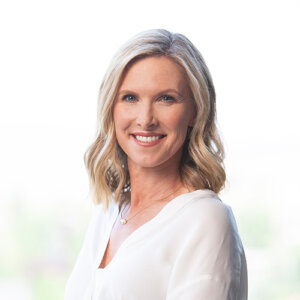
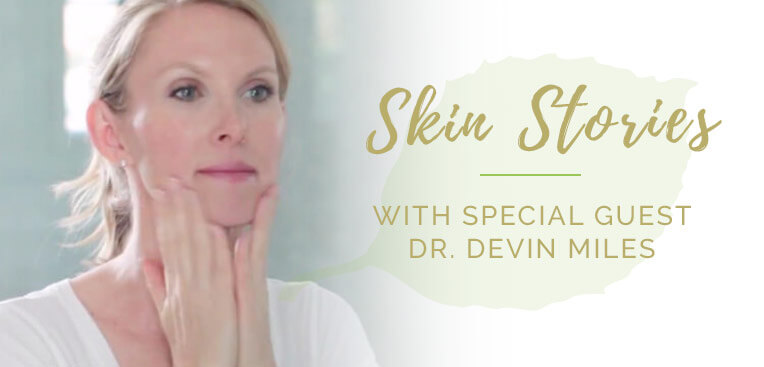
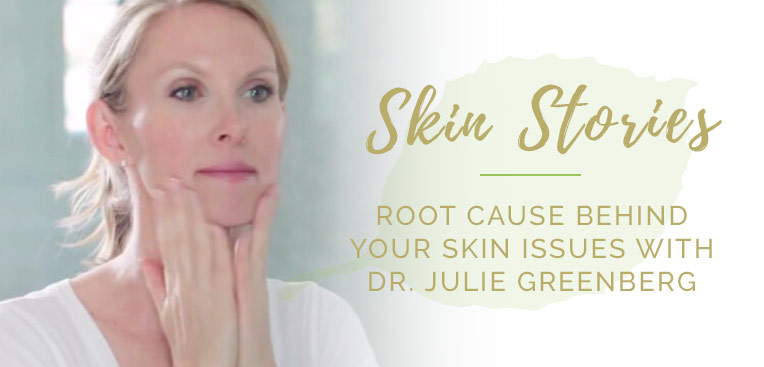

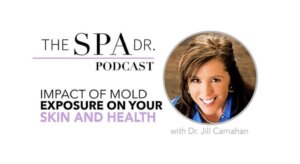
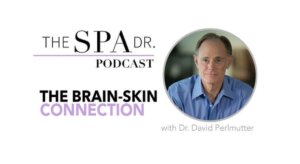
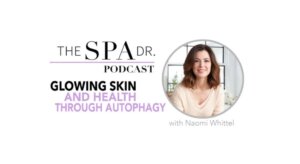
Reader Interactions